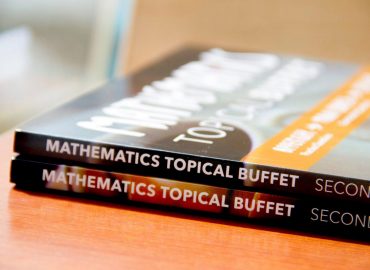In recent years, educators have developed various active learning techniques to better engage their students. Active learning is becoming more common in today’s classroom, as more teachers and students learn about its benefits. Through activities such as peer review and brainstorming, there’s so much to explore that active learning will never get boring.
What is Active Learning?
Active learning is an instructional method that engages students by allowing them to participate actively and interact with one another. Active learning places a greater focus on the learner than on the content. It motivates the learner to take responsibility for their own learning.
Active learning is the opposite of passive learning, in which the teacher speaks and the students listen. In an active learning environment, it is not uncommon to have information and ideas flowing from one student to another.
In an active learning classroom, teachers would employ various active learning techniques to help the students learn on their own. The teacher becomes a facilitator who guides the students in their learning, and also equips them with active learning techniques.
Technology in an Active Learning Environment
It is widely known that technology can enhance individual learning. With the help of technology, online education, distance learning, and access to up-to-date information are easier to reach. Since each student interprets information differently, technology enables more research into subjects that are more challenging to learn.
What are some benefits of active learning? Critical thinking, improved collaboration skills and creative thinking are some of the skills students will pick up along the way. Students should do their own preparation ahead of class so that they can contribute to everyone’s learning. Apart from developing a sense of preparedness, teachers should also encourage students to take calculated risks. At the same time, active learning promotes real-world problem-solving and increases engagement among students.
Active learning also helps students to develop interpersonal skills as they work together in the pursuit of learning. Students are more motivated to learn, as they feel that they are ‘in control’ of their learning. As a result, they would gain more content knowledge than if they were to learn passively.
Active Learning Techniques
There are many different active learning techniques out there. In this section, we cover some examples of active learning techniques. We will start with some of the more common techniques before moving to the more interesting ones. Active learning techniques should be rotated often to help students move out of their comfort zones.
Peer Review
Students review and give their comments on content material written by their peers. What are some of the key takeaways from reading the material? How can the material be improved so that it is even better than before? Peer review can often be extended to larger collaborative teams working on a project together.
Think, Pair, Share
In this active learning technique, students begin by thinking about an answer to a question on their own. They consider various methods and possibilities carefully. After that, the student would pair up with another student who has also gone through the individual thinking process. The two students exchange their thoughts with each other.
Brainstorming and Group Discussions
Students gather in small groups to discuss a topic or question posed by the teacher. For an effective discussion to take place, the teacher should frame the key question in a suitable manner. For example, teachers can adopt the Socratic approach by asking thoughtful questions that encourage critical thinking. This would also allow students to reflect deeply on their thoughts.
Discovering Plate Boundaries
This is a group discussion method which exercises many aspects of cooperative learning. When developing the lesson plan, teachers would be integrating positive interdependence and individual accountability. In other words, group members need to build a common goal and work towards it together. After all, the success would be determined by the active participation of all group members.
Gallery Walk
Working together in teams, students move around the classroom to fill up flipcharts pasted around different parts of the classroom. Each flipchart has a specific concept related to the overall theme. Students can write their perspectives or respond to questions by writing on the flipchart. They can also add to what other teams have contributed. With only a few minutes at each station, students learn to collaborate and listen to one another.
Constructing a Mind Map
A mind map provides a visual representation of how different pieces of information interconnect with one another. We start by placing the central idea in the middle, with related information branching outwards. Students arrange themselves into groups and work together to create a mind map. The use of hand-drawn pictures and colours on mind maps can also make the information more memorable.
Problem-Solving Using Real-World Data
Often used for mathematics and science questions, real-world data helps students to relate what they are learning to the things around them. The data can be presented in various forms to improve visualisation and analytical skills through scientific exploration. This learning process encourages students to make observations. In the most general sense, this is a fundamental component to student learning.
Case Studies
In contrast to mathematics and science, case studies can be used for most open-ended subjects. When students give their critical views on real-world cases, they generate new ideas and come up with alternative perspectives. Just be careful – this active learning technique can quickly consume classroom time, as excited students get drawn into the debate!
Just in Time Teaching
Students would read the material in advance and work on some warm-up exercises before the lesson itself. These pre-lesson assignments lead up to the content which would be covered in the classroom. Students can also participate in collaborative activities to prepare for the next lesson, during which their responses could be used as discussion points.
Flipped Classroom
Instead of learning new content in school and doing homework after class, the activities are now flipped around. Students learn about the topic at home before the actual lesson, either by reading handouts or watching online lectures. This frees up the limited classroom time for the teacher to implement other active learning techniques and activities. In a flipped classroom, the focus shifts from the teacher to the learner.
Taking Turns to Teach
Learners read up on a particular topic and take turns to teach their peers. As a facilitator, the teacher would step in to ensure that information is communicated accurately. They can also provide more information along the way. The teacher can also help the presenter in many ways, such as stepping in to explain a trickier concept. Always make it a point to include other active learning techniques to engage other students. This ensures that the lesson does not turn into a passive learning session.
Gamification
This active learning technique introduces competitiveness into learning, and is also known as game-based learning. Students can learn in a fun and interactive manner. Students can compete with one another in a physical setting, or collect points and badges in a digital world. With the potential to gain instant satisfaction and bragging rights, such challenges can motivate students to learn better. Students would also gain confidence through various achievements.
Role-Playing
The teacher chooses a particular topic, while the students look at it from the perspective of a character. This character affects the topic, and at the same time would also be affected by that topic. This activity promotes creativity and helps students to think outside the box. Role-playing also helps students to develop their problem-solving skills and prepare them for real-life encounters.
Related Questions
How can we eliminate the fear of assessment for students? Teachers can help students to build their self-confidence and keep them motivated. Students should know that it’s okay to fail, and strive to be better next time. Let’s put it this way. Assessments are merely a tool to help teachers identify the strengths and weaknesses of their students.
How would anxiety affect learning? Anxiety has a big impact on memory. When a student is feeling anxious, it may affect their learning and their ability to retain information. One way to overcome anxiety is to build more self-confidence. Students who are well-rested are also more likely to remain calm during an examination.



